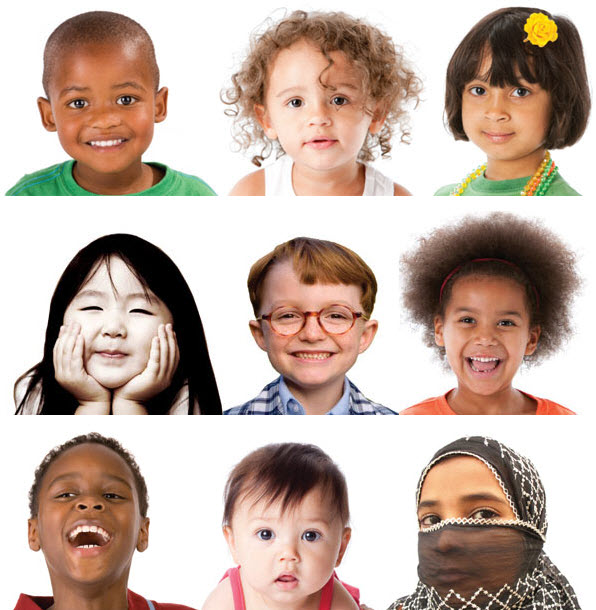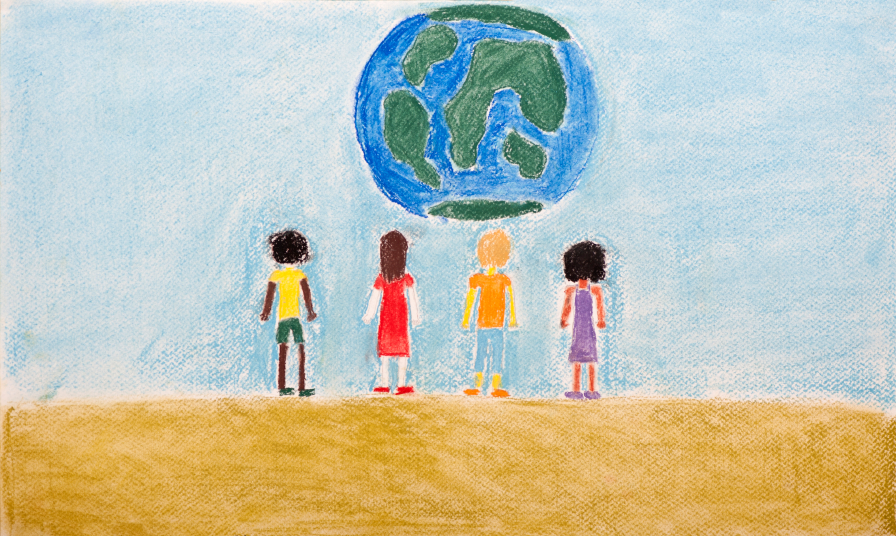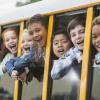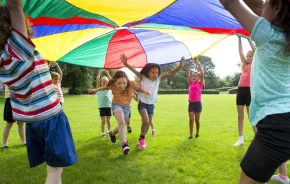 Tacoma chiropractor and mom Laelle Martin always knew she wanted her future children to embrace dual cultures: that of her native Pacific Northwest as well as the Latin American culture she grew to love when she spent a year and a half as an AmeriCorps volunteer in Puerto Rico after college.
Tacoma chiropractor and mom Laelle Martin always knew she wanted her future children to embrace dual cultures: that of her native Pacific Northwest as well as the Latin American culture she grew to love when she spent a year and a half as an AmeriCorps volunteer in Puerto Rico after college.
But like most of the best-laid parenting plans, her lofty vision hit a few speed bumps. By the time her son, Ari, was born in 2009, Martin’s once-flourishing Spanish language skills were growing rusty, and she was too busy to do much cultural education at home.
“It was challenging for me to speak Spanish with him on a regular basis — we had a few books, but I wanted more,” she says. And life is only getting busier: She’s expecting baby number two in May.
After some searching, Martin found Mis Amigos, a language learning center for children on Tacoma’s North Slope, and enrolled Ari in a parent-child course in the fall of 2011. But it’s not just another Mommy-and-me class — this one may actually give Ari a leg up in school, work and life. How? By building his cultural intelligence or cultural quotient (CQ), an increasingly desirable trait for children growing up in today’s borderless world.
Best-selling author David Livermore wrote The Cultural Intelligence Difference: Master the One Skill You Can’t Do Without in Today’s Global Economy, and he defines cultural intelligence as “the capacity to function effectively in a variety of cultural contexts — including national, ethic, organization and generational.” Global research conducted over the past decade shows that those with high levels of cultural intelligence are better able to adapt and thrive in a complex global society, he notes.
In short, Livermore says, it’s no longer enough to be book smart or even emotionally intelligent. Modern children need to learn to succeed in an increasingly diverse, characteristically unpredictable global village, which requires a unique set of skills — one that many kids living in a fairly heterogeneous North American culture won’t acquire on their own.
All of this may seem like yet another metric for busy parents to manage. But experts say that it is possible — even simple — to build a child’s cultural quotient, beginning at birth.
Culture smarts
If “cultural intelligence” sounds like a workplace buzzword, that’s because it is. The term, popularized by scores of multicultural management tomes and textbooks since 2000, has effectively trickled down to education and parenting — which is exactly where cultural intelligence needs to begin, says Livermore.
“When I interact with executives around the world about the topic of cultural intelligence, one of the most frequent questions I get asked is ‘Who is teaching our kids to be culturally intelligent? Isn’t it better to instill these values and capabilities in them when they’re young?’ I couldn’t agree more,” he says.
As children become more culturally intelligent, they will get better at interacting effectively with their peers, today and in the decades ahead, Livermore notes.
When parents consider the world’s rapidly shifting demographic profile, it’s clear that kids need new competencies to succeed. Today, 49 percent of children in this country ages 5 and younger are children of color; China will soon be the number-one English-speaking country in the world; and General Electric predicts that 60 percent of its new growth in the next decade will come from the developing world, compared to 20 percent over the past decade.
Kids in some regions of the country might already be better prepared for this changing landscape than those in other parts of the country. Seattle, a high-tech hotbed, for example, is home to culturally rich communities and relatively progressive schools. Seattle has been a leader in culturally sensitive education since the 1970s, when Seattle Public Schools instituted voluntary desegregation through busing at a time when other districts in the country were fighting desegregation in court.
The National Association for Multicultural Education (NAME) lauds Seattle Public Schools as being the creator of one of the country’s first multicultural curricula in support of desegregation. More recently, however, area schools have been dubbed “resegregated,” and in 2011, NAME criticized the district for its failure to implement an approved plan to serve bilingual and immigrant student populations, according to the NAME website.
Seattle implements new programs
The district is working to recover its position as a national leader, according to Bernardo Ruiz, director of School and Family Partnerships and head of the Equity and Race Relations for Seattle Public Schools. In August 2012, the Seattle School Board passed the Ensuring Educational and Racial Equity policy, making Seattle one of only two districts in the nation (along with Portland, Oregon) with an equity policy in place.
A slew of new programs aims to step up the school district’s collective cultural IQ. Family Connectors University, a new nine-week cultural education and advocacy workshop created for local families through a partnership between the district and Seattle University, graduated its first cohort in March. The program taught a linguistically and culturally diverse group of parents how to engage with their schools, educate other parents and advocate for multicultural education with their legislators, says Ruiz.
Teacher training under the new Seattle Public Schools equity policy started in October 2012. So far, 450 teachers have been trained in culturally relevant teaching methods. This type of educator training is a boon for both teachers and students, says Brinda Jegatheesan, Ph.D., associate professor in the educational psychology department at the University of Washington.
First, such training helps the teacher identify and eliminate any personal bias about working with indigenous or immigrant populations — such as mistaken beliefs about native students’ work ethic or motivation. This type of teacher bias is common, regardless of the child’s culture, says Jegatheesan.
“When teachers get beyond a deficit-based view of a student’s culture and instead see the strengths of the child’s native community, the child feels included and valued, and can participate more fully.”
Another program deployed in Seattle elementary schools this fall, called family cultural sharing, involves local families giving detailed presentations on lifestyle, education and culture that span the social and ethnic spectrum. It’s not enough to simply celebrate our differences; students need to appreciate the communities that make up this beautiful country of ours, says Ruiz.
“We’re going beyond ‘multicultural night’ or a parade to really engage students and families in a meaningful way.”
Race and culture
Thriving in a racially diverse environment is second nature to Richard Bucher, Ph.D., author of Building Cultural Intelligence (CQ): 9 Megaskills. He graduated from Howard University, a historically black college, and teaches courses at Baltimore City Community College in Maryland. But cultural intelligence doesn’t begin and end with the study of different ethnicities — it’s also about normalizing disability, chronic illness or anything else that might set someone apart, he says.
“It’s about more than multicultural education,” he says. “Cultural intelligence helps kids move beyond labels, whether someone comes from a different country or uses a wheelchair. It’s about seeing the person behind the wheelchair.”
Bucher’s two (now grown) daughters often tagged along with him to lectures and work events, and felt perfectly at home in culturally diverse settings. But nothing expanded their horizons like having a brother with special needs, he says. Bucher’s son, Jimmy, is 36 and autistic.
“We didn’t do anything particularly special to raise culturally intelligent kids, but they always understood how to interact with and include someone different. It was part of their daily life.”
Angela Bergeson, head of the IDEAL School of Manhattan (IDEAL stands for inclusion, diversity, excellence, acceptance and leadership), agrees that culture isn’t simply a matter of geography. The IDEAL School is an all-inclusive grade school with a student body composed of two-thirds neurotypical children and one-third special needs children.
Anything that seems “different” to a child can become a deeply embedded cultural bias — or a catalyst for learning and growth, she notes. “Culturally intelligent kids have self-awareness about their own identity, along with a respect for individual differences.”
Building a child’s CQ
So what does it take to develop this critical competency? According to Livermore, cultural intelligence is made up of four qualities: drive (motivation), knowledge (cognition), strategy (metacognition) and action (behavior). For children, this means developing the desire to function well in culturally diverse settings and an understanding of ways that distinct cultures are similar and different.
The first two concepts, “drive” and “knowledge,” can be introduced to toddlers and young children without much effort, explains Livermore — simply taking young children through an international supermarket or to a concert featuring music from another culture can spark a discussion about how the culture differs from that of the child’s own family.
The “strategy” and “action” parts of the equation may come along later, during the tween and teen years, as children digest and interpret culturally diverse experiences and learn to adapt their behavior appropriately.
This is where a child’s burgeoning critical thinking skills can come into play. Parents can start by asking children to reflect on and critique their own cultural beliefs, and examine how false cultural assumptions and stereotypes — such a belief that people with a certain cultural background are lazy, for example — can damage relationships and inhibit success across cultures, says Bergeson.
 The frog and the well
The frog and the well
There’s an ancient Chinese proverb about the frog and the well, says Bucher: A frog lived his entire life inside a well, and his world was very small. He only knew what he could see: a tiny slice of sky at the top. Too many kids are like that frog, unaware of the world beyond their own community, he says.
“Building cultural intelligence allows children to move up and out of their own ‘cultural silos’ to experience more of the world and enjoy more of the world.”
For her part, Martin is doing her best to push Ari (and later, her young daughter) up and out of the proverbial “well” to help foster an understanding of the world’s different ideas, cultures and languages. This broad mindset will give her kids an advantage in education, communication and relationships, she says. She’s also thinking ahead — decades ahead. “It is also a wonderful asset out in the world of employment.”
Malia Jacobson is a nationally published freelance writer and mom. As a child, she traveled the country in a motor home with her grandparents and hopes to experience the world with her own children (as soon as everyone is out of diapers).
READING LIST
For adults:
The Cultural Intelligence Difference: Master the One Skill You Can’t Do Without in Today’s Global Economy by David Livermore
Building Cultural Intelligence (CQ): 9 Megaskills by Richard Bucher
Cultural Intelligence: A Guide to Working with People from Other Cultures by Brooks Peterson
The Flat World and Education: How America’s Commitment to Equity Will Determine Our Future by Linda Darling-Hammond
For children:
Global Babies by The Global Fund for Children (picture book)
The Name Jar by Yangsook Choi
The Colors of Us by Karen Katz
Whoever You Are (Reading Rainbow Books) by Mem Fox and Leslie Staub











